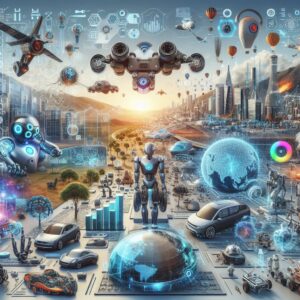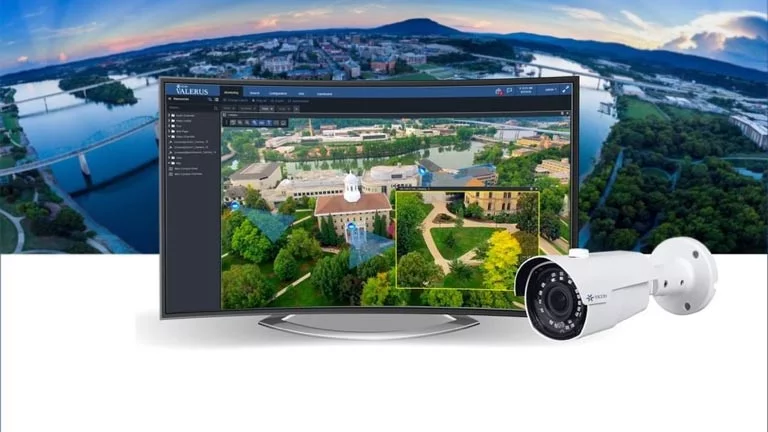The Evolution of Artificial Intelligence: From Theory to Reality
Artificial Intelligence (AI) has transitioned from a theoretical concept to a practical reality, profoundly impacting various aspects of our lives. Once confined to the realms of science fiction, AI is now deeply integrated into everyday technologies, from voice assistants to autonomous vehicles. In this detailed exploration, we’ll trace AI’s evolution, from its origins to its current applications, and speculate on its future potential through advance with ai

**1. Origins of AI:**
AI’s roots trace back to the mid-20th century, with pioneering work by researchers like Alan Turing and John McCarthy. Turing proposed the Turing Test in 1950, questioning whether a machine could exhibit intelligent behavior comparable to a human. McCarthy coined “artificial intelligence” in 1956, marking the field’s official inception.
**2. Early Developments:**
Early AI research saw notable progress in symbolic reasoning, expert systems, and game playing. Researchers crafted algorithms capable of solving puzzles, mastering chess, and understanding natural language to some extent. However, early AI systems were limited and often struggled with real-world complexity.
**3. The AI Winter:**
Despite initial optimism, AI experienced periods of stagnation known as “AI winters.” These downturns were characterized by waning interest, funding cuts, and disillusionment. The first AI winter occurred in the 1970s and 1980s, followed by another in the late 1980s and early 1990s. During these periods, skepticism grew due to AI’s failure to fulfill early promises.
**4. Resurgence of AI:**
The turn of the 21st century witnessed a resurgence of interest in AI, driven by advances in computing power, big data, and machine learning algorithms. Breakthroughs in neural networks, particularly deep learning, revolutionized the field by enabling AI systems to learn directly from data. This data-driven approach propelled progress in image recognition, natural language processing, and autonomous driving.
**5. Current Applications:**
Today, AI permeates various industries, powering applications from virtual assistants to medical diagnosis. Tech giants like Google, Facebook, and Tesla lead AI innovation, leveraging machine learning algorithms to enhance search results, personalize user experiences, and develop self-driving cars. Moreover, AI is transforming healthcare, with systems detecting diseases from medical images and optimizing treatment plans.
**6. Ethical and Societal Implications:**
As AI advances, it raises ethical and societal questions regarding privacy, bias, and job displacement. Concerns about algorithmic bias have prompted calls for transparency and fairness. Additionally, automation by AI sparks debates about job displacement and the need for retraining programs.
**7. Future Outlook:**
Looking ahead, AI holds immense promise and challenges. Continued research and efforts to address ethical concerns will shape AI’s trajectory. With responsible stewardship, AI can revolutionize industries, improve lives, and unlock new frontiers of innovation.
**8. AI in Education:**
AI is poised to revolutionize education by personalizing learning experiences and offering real-time feedback. Intelligent tutoring systems can tailor sessions to each student’s pace, bridging learning gaps and improving academic performance. Moreover, AI aids educators in curriculum development, assessment, and administrative tasks, fostering a collaborative learning environment.
**9. Challenges and Opportunities Ahead:**
Despite AI’s vast benefits, challenges such as ethical considerations and job displacement must be addressed. Interdisciplinary collaboration is vital to tackle societal implications and ensure equitable distribution of AI’s benefits. Despite challenges, AI presents opportunities to drive innovation, improve quality of life, and address pressing global challenges.
**10. AI in Business Optimization:**
Beyond its applications in education, AI is reshaping the landscape of business optimization. AI-powered analytics and automation tools enable businesses to streamline operations, enhance decision-making, and drive efficiency. Machine learning algorithms analyze vast amounts of data to uncover insights, predict trends, and optimize processes across various functions such as supply chain management, marketing, and customer service. Additionally, AI-driven robotic process automation (RPA) systems automate repetitive tasks, reducing human error and freeing up employees to focus on more strategic initiatives.
**11. AI in Environmental Sustainability:**
Another promising area where AI is making significant strides is in environmental sustainability. AI-powered solutions are being deployed to address pressing environmental challenges such as climate change, resource conservation, and pollution mitigation. For example, AI algorithms analyze satellite imagery and sensor data to monitor deforestation, track wildlife populations, and detect environmental hazards in real-time. Additionally, AI-driven predictive models help optimize energy consumption, reduce waste, and minimize environmental impact across industries.
**Conclusion:**
AI’s evolution from theory to reality has been marked by breakthroughs, setbacks, and ongoing innovation. As AI continues to integrate into our lives, it’s crucial to address its ethical implications and societal impacts. Responsible and ethical AI deployment will pave the way for a future where intelligent machines augment human capabilities and enrich the human experience.










